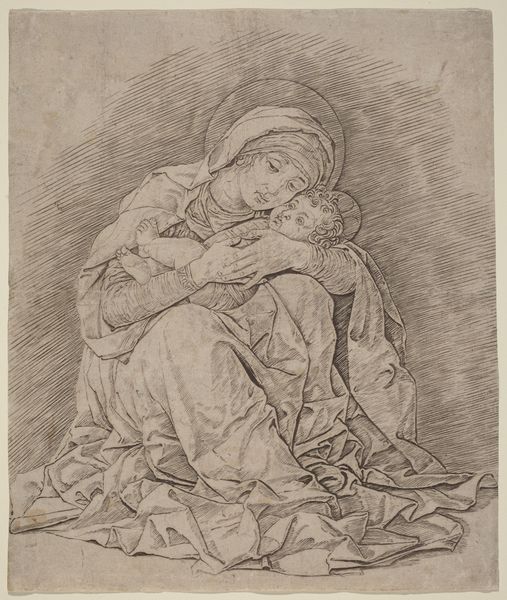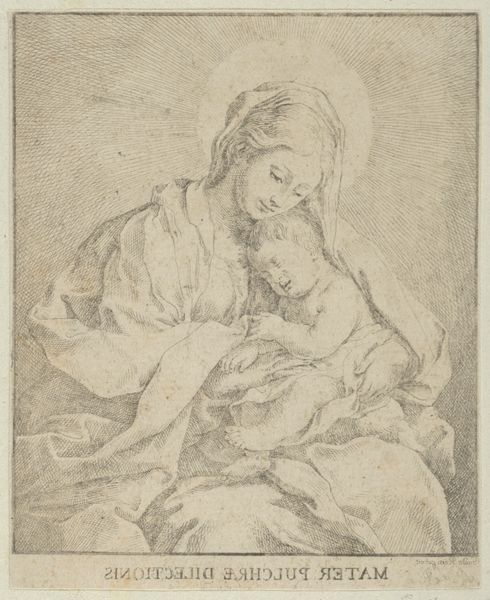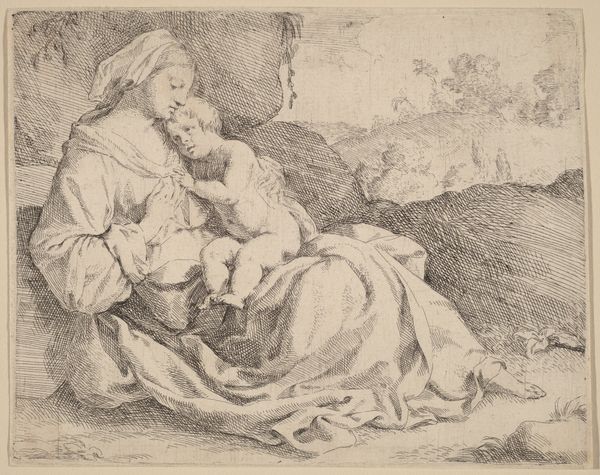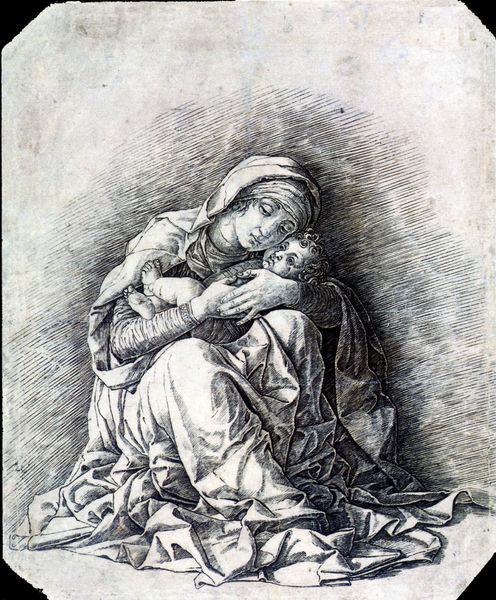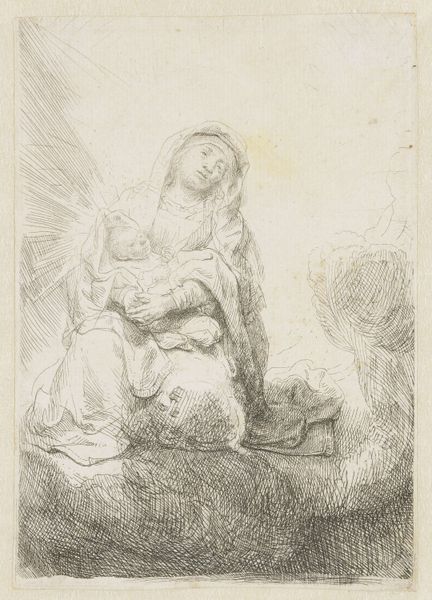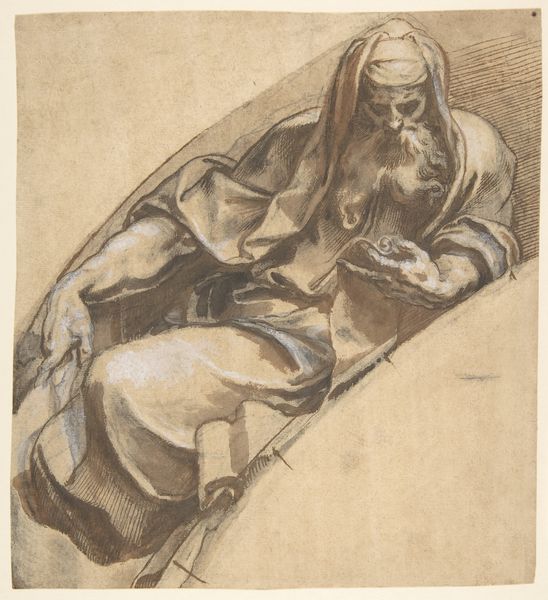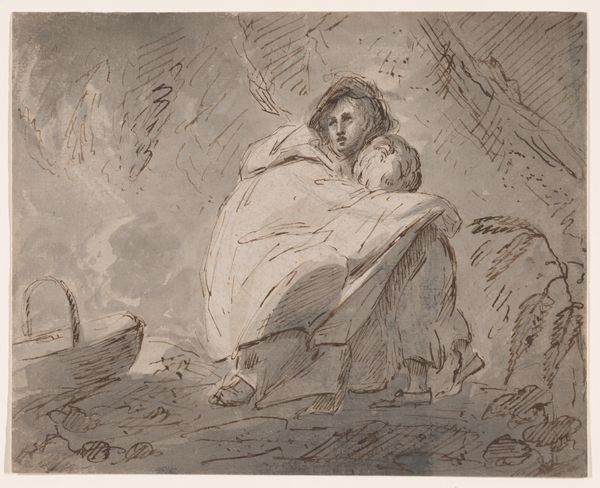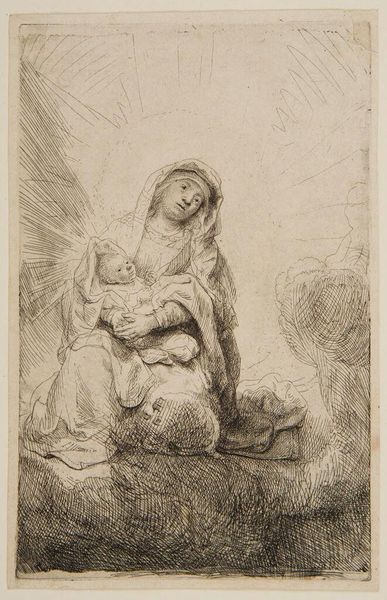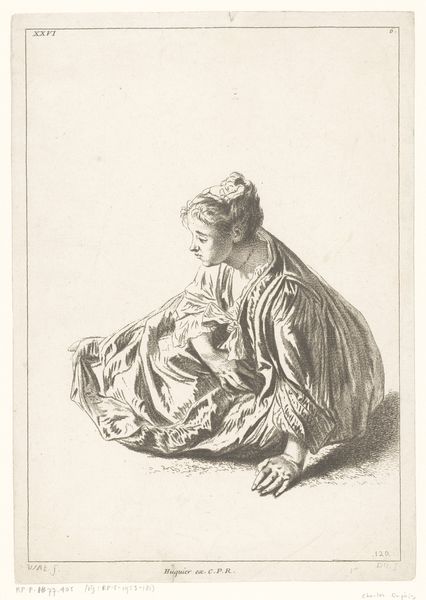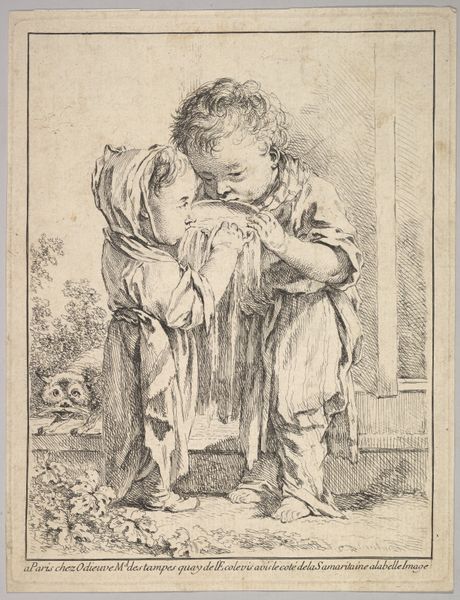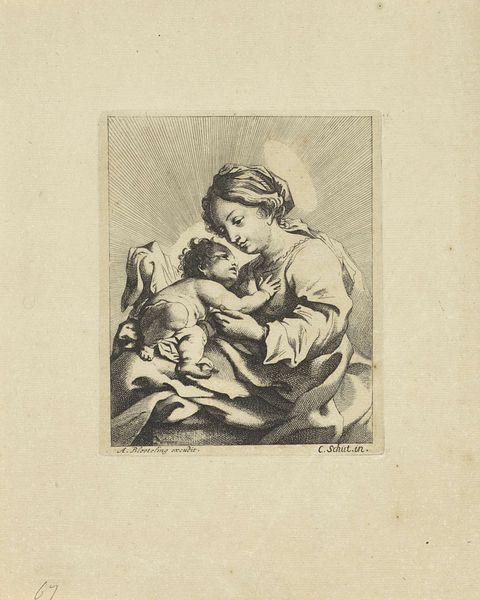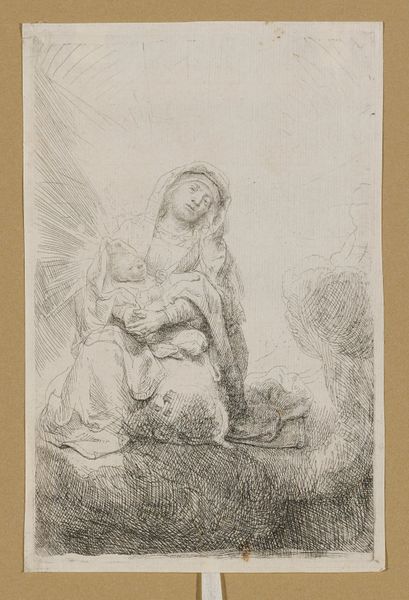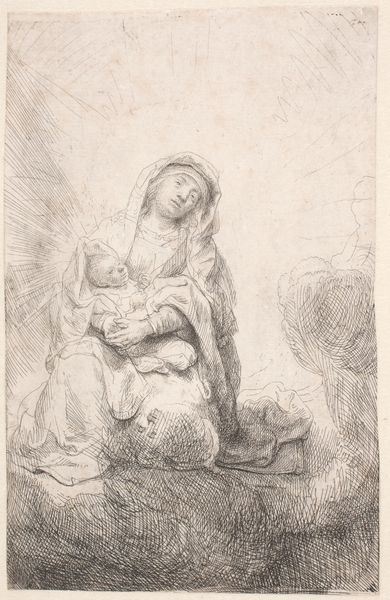
drawing, print, paper, engraving
#
portrait
#
drawing
# print
#
figuration
#
paper
#
form
#
line
#
italian-renaissance
#
engraving
Dimensions: 228 × 235 mm (image before remargining); 265 × 250 mm (sheet)
Copyright: Public Domain
Andrea Mantegna made this engraving, “Virgin and Child,” sometime in the late 15th century. At this time, Venice was a nexus of trade between Europe and the East. The rise of merchant capitalism created a new class of people who had the means to buy art for themselves. This image, with its stark lines and classical forms, may have appealed to the new tastes of the rising Venetian mercantile class. Prints like this one offered a way to mass produce and circulate images, and disseminate new artistic ideas. The virgin is dressed in simple robes with a humble expression. Here Mantegna departs from earlier traditions of depicting holy figures in opulent detail. He may have been reflecting new humanist beliefs that emphasized piety and simplicity over riches. To understand this image fully, one could research the history of Venetian printmaking, the development of humanist thought, and the influence of commerce on the art market. The meaning of art is always contingent on its social and institutional context.
Comments
No comments
Be the first to comment and join the conversation on the ultimate creative platform.
